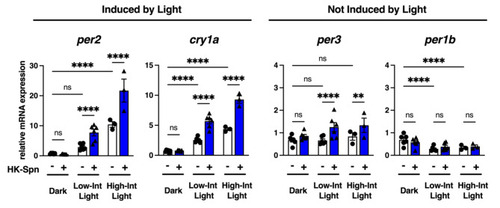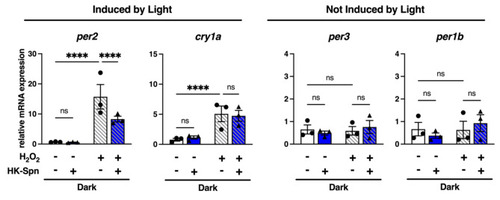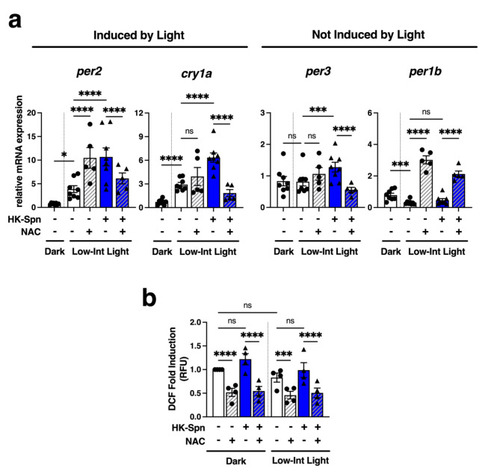- Title
-
Heat-inactivated Streptococcus pneumoniae augments circadian clock gene expression in zebrafish cells
- Authors
- Morales Fénero, C., Sacksteder, R.E., Diamos, A.G., Kimmey, J.M.
- Source
- Full text @ Sci. Rep.
|
Effect of light exposure in the expression of |
|
HK-Spn exposure augments the expression of |
|
Light intensity proportionally augments HK-Spn effect on |
|
Hydrogen peroxide does not replicate light and HK-Spn effects. Relative expression of |
|
Role of ROS in HK-Spn and light induction of clock genes. ( |





